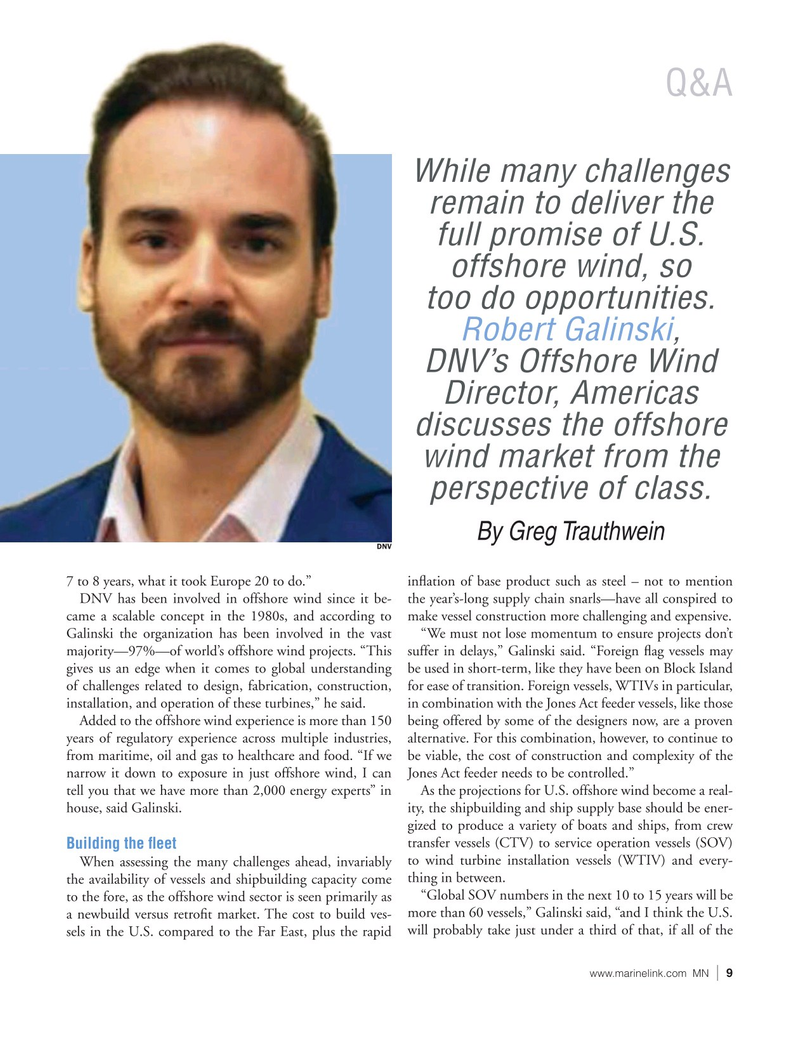
Page 9: of Marine News Magazine (January 2022)
Workboat Propulsion
Read this page in Pdf, Flash or Html5 edition of January 2022 Marine News Magazine
Q&A
While many challenges remain to deliver the full promise of U.S. offshore wind, so too do opportunities.
Robert Galinski,
DNV’s Offshore Wind
Director, Americas discusses the offshore wind market from the perspective of class.
By Greg Trauthwein
DNV 7 to 8 years, what it took Europe 20 to do.” in? ation of base product such as steel – not to mention
DNV has been involved in offshore wind since it be- the year’s-long supply chain snarls—have all conspired to came a scalable concept in the 1980s, and according to make vessel construction more challenging and expensive.
Galinski the organization has been involved in the vast “We must not lose momentum to ensure projects don’t majority—97%—of world’s offshore wind projects. “This suffer in delays,” Galinski said. “Foreign ? ag vessels may gives us an edge when it comes to global understanding be used in short-term, like they have been on Block Island of challenges related to design, fabrication, construction, for ease of transition. Foreign vessels, WTIVs in particular, installation, and operation of these turbines,” he said. in combination with the Jones Act feeder vessels, like those
Added to the offshore wind experience is more than 150 being offered by some of the designers now, are a proven years of regulatory experience across multiple industries, alternative. For this combination, however, to continue to from maritime, oil and gas to healthcare and food. “If we be viable, the cost of construction and complexity of the narrow it down to exposure in just offshore wind, I can Jones Act feeder needs to be controlled.” tell you that we have more than 2,000 energy experts” in As the projections for U.S. offshore wind become a real- house, said Galinski. ity, the shipbuilding and ship supply base should be ener- gized to produce a variety of boats and ships, from crew transfer vessels (CTV) to service operation vessels (SOV)
Building the ? eet
When assessing the many challenges ahead, invariably to wind turbine installation vessels (WTIV) and every- the availability of vessels and shipbuilding capacity come thing in between.
“Global SOV numbers in the next 10 to 15 years will be to the fore, as the offshore wind sector is seen primarily as more than 60 vessels,” Galinski said, “and I think the U.S. a newbuild versus retro? t market. The cost to build ves- sels in the U.S. compared to the Far East, plus the rapid will probably take just under a third of that, if all of the www.marinelink.com MN 9|

 8
8

 10
10
